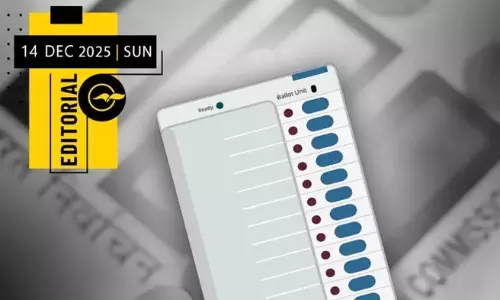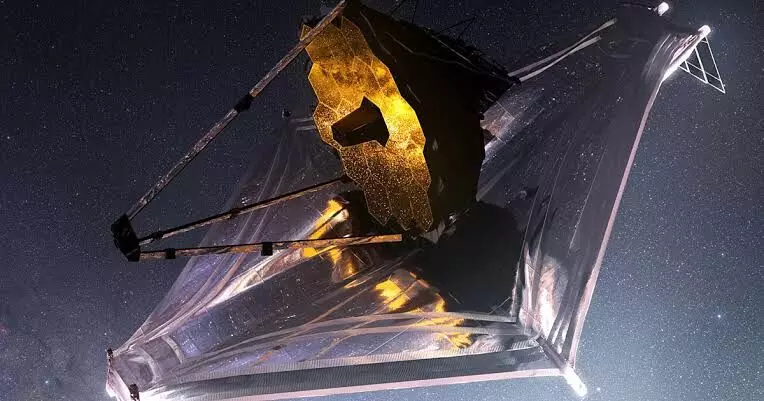
James Webb telescope deploys sunshield in milestone for NASA mission
text_fieldsThe most powerful telescope ever launched has managed to unfurl it's complex 'sunshield', a tennis-court sized structure that will help keep the observatory part of the telescope in the shade so that it can detect the faintest of infra-red light coming in from the deepest parts of the universe.
The James Webb telescope is one of NASA's most ambitious science projects and it's most long-awaited since the launch of the Hubble telescope. It was launched on Christmas Day 2021 and is now currently halfway to its proposed orbital point 1 million miles away from the Earth.
"All five layers of the sunshield are fully tensioned," said an announcer at the telescope's control center in Baltimore, where team members cheered, a live feed showed, reported AFP. Each of the layers was unfolded one by one over two days.
Because the telescope was too large to fit into a rocket's nose cone in its operational configuration, it had to be transported folded, origami style. Unfurling is a complex and challenging task, the most daunting such deployment NASA has ever attempted.
The sheets of the sunshield, also known as a heatshield, are made of a thin material called Kafton that has also been treated with silicon. At 10 billion dollars, the James Webb telescope is q gigantic scientific gamble as NASA races to delicately unfold each part of the structure's parts, including its iconic honeycomb mirror.
Once all the parts have been deployed, a final burn of engines will propel the telescope into an 'L2' orbit around the sun which will help it avoid most light and heat sources to focus on absorbing signals from the oldest parts of the universe. The Hubble telescope is limited by the fact that it cannot observe the bulk of infrared light which is coming from farther out.
"It's always nighttime at L2 when you've got a big sunshade up which is the size of a tennis court blocking out the light from the Sun, Earth and Moon. So half the sky is always in darkness. That means that, unlike Hubble, you're doing science all the time," said Michael Kaplan, a former NASA engineer who headed the space agency's telescope planning in the 1990s, during an interview to the Times of Israel. Kaplan was also one of Webb's initiators.
"In five years, you can have as much observing time as Hubble had in 15, because Hubble is only observing about 35% of the time," he added.























